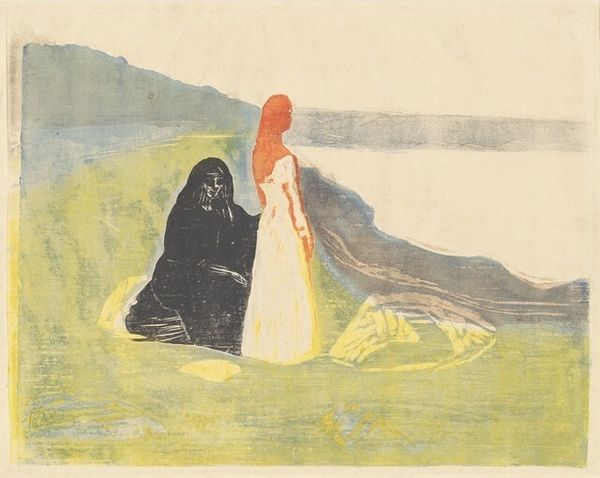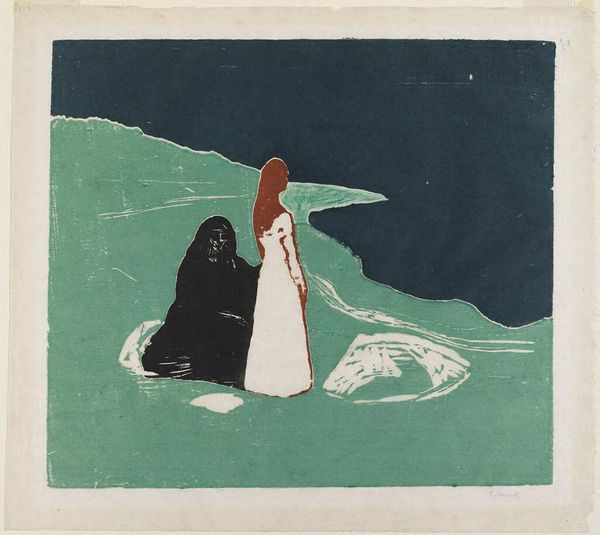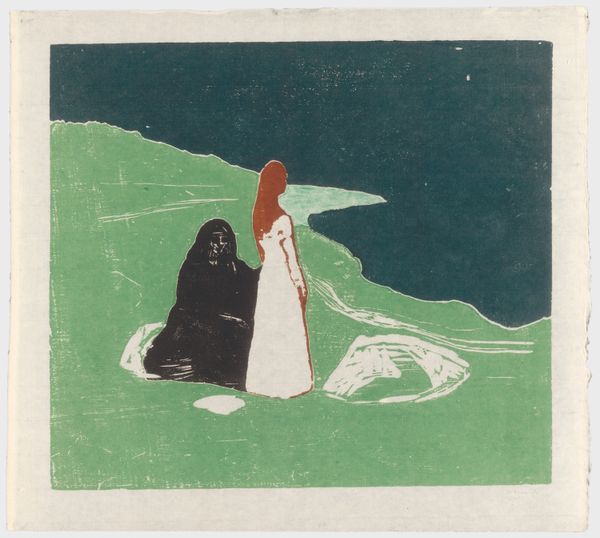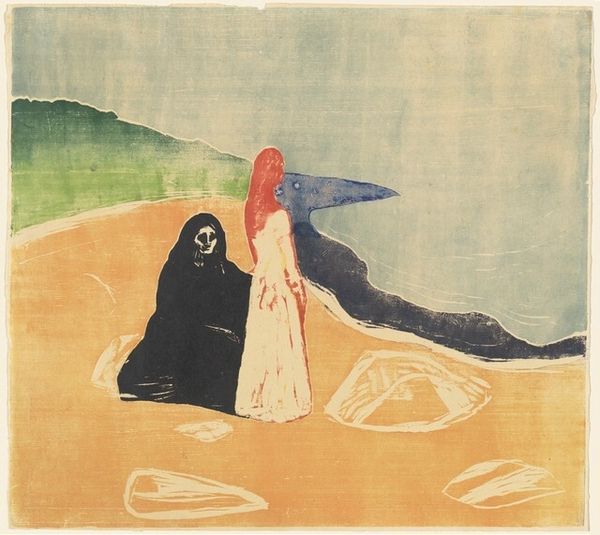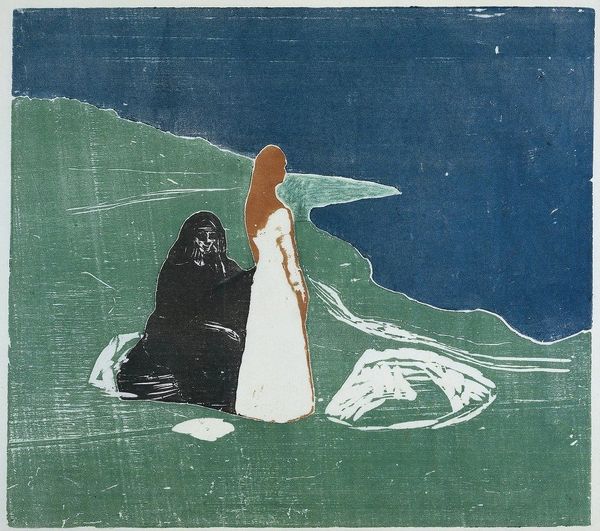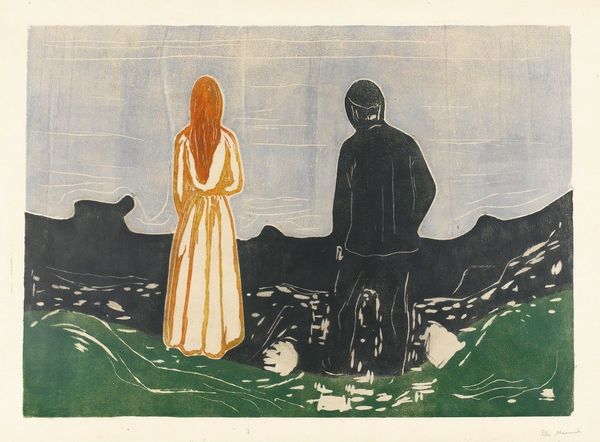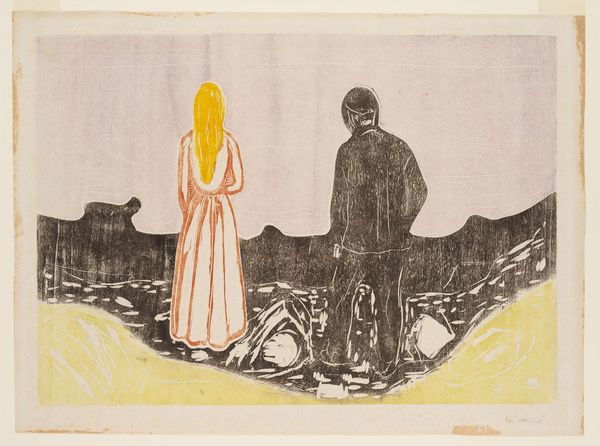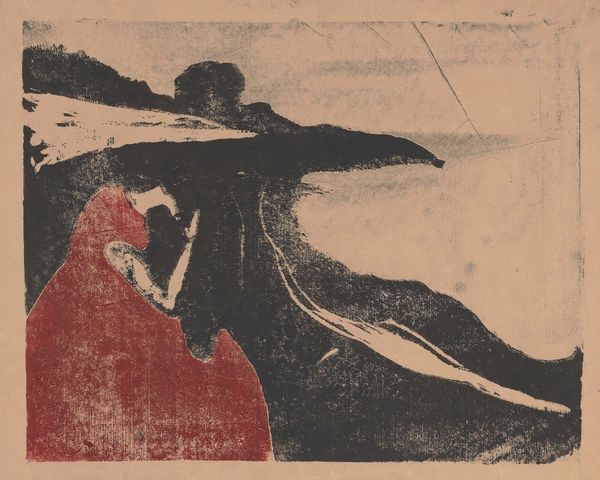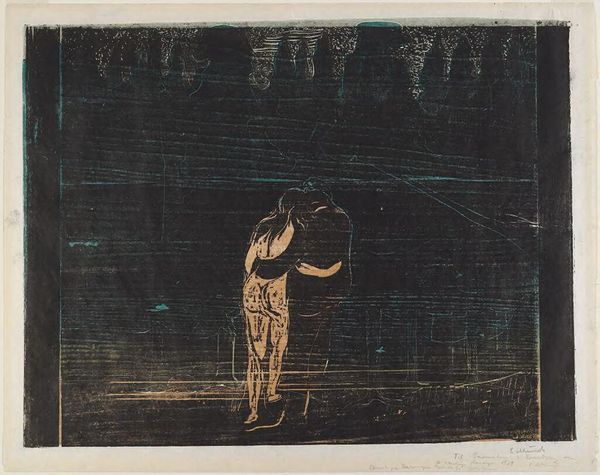
print, woodcut
# print
#
landscape
#
figuration
#
expressionism
#
woodcut
#
cityscape
Dimensions: image (irregular): 40.3 x 51.5 cm (15 7/8 x 20 1/4 in.) sheet: 43 x 55.4 cm (16 15/16 x 21 13/16 in.)
Copyright: National Gallery of Art: CC0 1.0
Curator: Well, this image certainly has an arresting quality. What strikes you first about this composition? Editor: Immediately, the mood. A certain unease, despite the idyllic shoreline. The contrasting figures pull you in. Who are these women, one shrouded and the other...almost luminous? Curator: Indeed. This is Edvard Munch's "Two Women on the Shore," a woodcut print dating to around the 1910s. Munch was, of course, deeply concerned with the psychological dimensions of modern life. He presented new models for confronting human suffering, using powerful color contrasts. Editor: The contrast is striking, isn't it? That stark black figure practically melts into the shadows. Death personified, perhaps, against a beacon of life and serenity in the other? Munch so often used archetypes as shorthand for profound truths. The sea always carries symbolic associations of the maternal, too. Curator: That is certainly plausible, thinking of water and cycles of death and rebirth. It also calls to mind the late nineteenth, early twentieth century cultural context and growing interest in spiritualism, but Munch did tend to favor personal over cultural memory when deciding on symbolism to deploy in his artworks. The woodcut technique here enhances the primal rawness that he aims for, too. It speaks to modern anxiety with the figures trapped on the colored surface. Editor: It feels as though it is tapping into something ancient and primal within us, those universal anxieties, using basic elemental shapes as psychological markers in this landscape. The whole history of figuration compressed into one frame! And is it truly expressionist to make us feel those depths through only basic lines? Curator: You have pinpointed that well; art historians typically link Munch's work with early expressionism, so many tend to agree with you. As a print, "Two Women on the Shore" circulated widely, reaching audiences who may never have visited a gallery. The message became accessible to more, though potentially stripped of the personal. Editor: Interesting how mass distribution of prints also democratizes suffering, or at least makes it more universally acknowledged! I think what resonates most with me is this dance between shadow and light, this dialogue that Munch establishes in visual form on this simulated plane. Curator: It definitely embodies a fascinating tension between individual experience and shared human anxiety in changing societies. Editor: This little piece invites endless meditation. What a window into human nature's deepest corners.
Comments
No comments
Be the first to comment and join the conversation on the ultimate creative platform.
